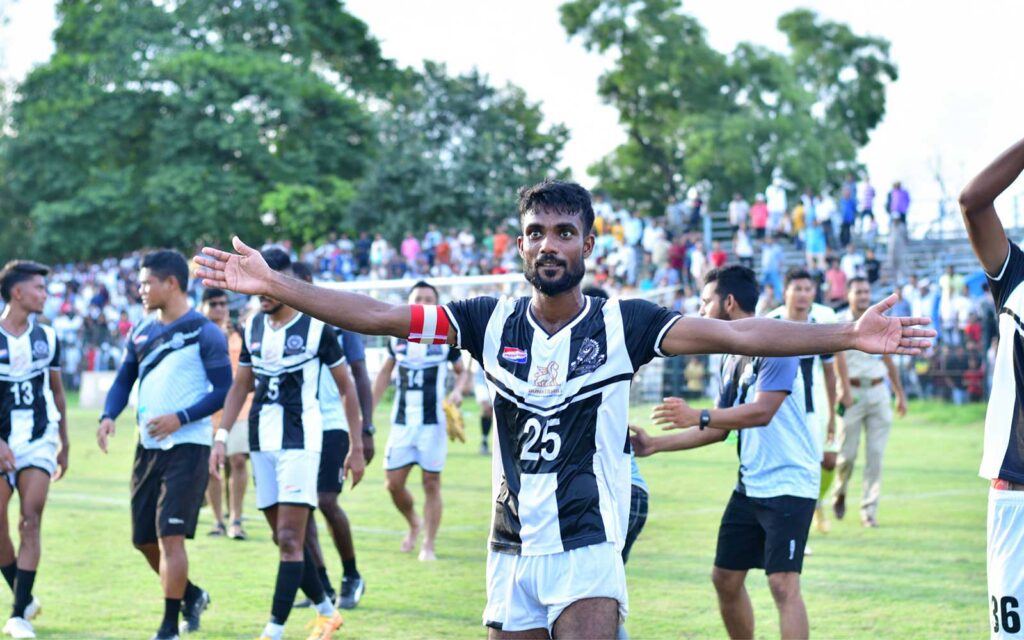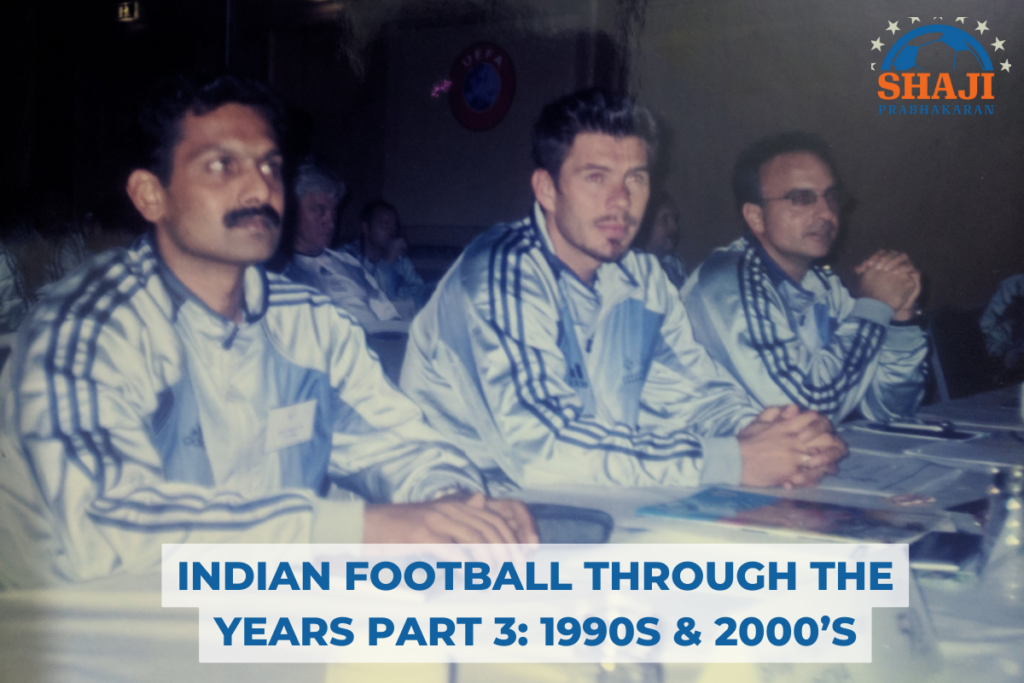Indian football has a rich and successful past dating back to the mid-19th century. The sport, an inheritance from the British, led to the creation of the Durand Cup tournament in 1888, making it the world’s third-oldest football competition. Then, in 1893, the IFA Shield became the fourth oldest football competition. The sport was mostly played by British soldiers with very little participation from the Indian population. Through the end 19th century, and the beginning of the 20th, many football clubs were formed and regular local competitions started. It was around the 1930s that the Indian team started touring countries like Australia, Japan, Indonesia, and Thailand. Post the success of several Indian football clubs, the All India Football Federation (AIFF) was formed in 1937. The 30’s was the period when the initial platform for football was being laid in India and a formal structure was being set up. The 1948 London Olympics was India’s first major international tournament, where a barefooted Indian team lost 2-1 to France. THE GOLDEN ERA India qualified for the 1950 FIFA World Cup finals in Brazil as a result of the withdrawal of other scheduled opponents. To date that was the only time when India qualified for the finals. No doubt that the period from 1951 to 1962 was Indian football’s golden era, under the guidance of Syed Abdul Rahim India was regarded as the best team in Asia. The Indian team started the 1950s with their triumph in the 1951 Asian Games in which they also were the host. During the course, India beat the likes of Indonesia and Afghanistan to reach the finals where they defeated Iran 1-0. In 1952 India continued their form by winning the Colombo Quadrangular Cup held in Sri Lanka. Later that year they went on to participate in the 1952 Olympics in Finland. After the Olympics in 1952, India also won the 1953 edition of the Colombo Cup. 1954 was another winning year for India as they won another edition of the Quadrangular Colombo Cup and went on to finish second in the 1954 Asian Games held in Manila. It was in 1955 that India won the fourth edition of the Quadrangular Cup which was held in Dhaka. The following year came the Olympic Games in 1956 held in Australia where India managed to finish fourth. India first met hosts Australia, winning the match 4-2 with Neville D’Souza becoming the first Asian to score a hat-trick in the Olympics and also making India the first team to reach the Olympics semi-finals which they lost 4-1 to Yugoslavia then were defeated by Bulgaria 3-0 for the third place playoff match. India went on to participate in the 1958 Asian Games in Tokyo where they finished fourth again and finished second in the Merdeka Cup in Malaysia in 1959. The start of the 1960s was marked by failure by not qualifying for the Asian Cup but two years down the line India won the 1962 Asian Games where they beat mighty South Korea 2-1 in the final and two years later they won the Asian Cup. LEGENDS OF THE GOLDEN ERA When we talk about football, it brings to our mind the names of all-time greats such as Pele, Maradona, Cruyff, and Messi but India had its own army of legends whose names used to be sung all across the nation at one point. Syed Abdul Rahim the legendary Indian coach played a huge role during this period. Many former India greats like Peter Thangraj, Jarnail Singh, PK Banerjee, Balaram, and Chunni Goswami were all under his guidance during the winning years. I was fortunate enough to meet some of the above legends of Indian football. ![]() Syed Abdul Rahim (Former India Coach)
Syed Abdul Rahim (Former India Coach)
“Spent an entire day with Asian All-star Jarnail Singh in his village in 1998 which was a lifetime experience for me. He shared his whole story from his childhood to his time in Kolkata including his superlative performances with the Indian team”
Jarnail Singh Dhillon was the captain of the Indian football team from 1965 to 1967 and played as a stopper for the national team. He was awarded the Arjuna Award in 1964 for his achievements as a player and was the only Indian footballer to be selected as the captain of the Asian All-Star Football Team in 1966.
“I regularly met Peter Thangraj in Ambedkar stadium and discussed the problems with youth football in India. A very humble personality and getting the opportunity to spend that much time with him discussing football was a highly encouraging and inspiring time for me”
Peter Thangraj was a regular with Subroto Cup in Delhi and also captained the services team for its first-ever triumph in the Santosh Trophy in 1960. After leaving the services he played for all three Kolkata footballing giants Mohammedan Sporting, Mohun Bagan, and East Bengal. He was named the best goalkeeper of Asia in 1958 and was also awarded the Arjuna Award in 1967. He twice played for the Asian All-Star team.
“I had a fabulous opportunity working with PK Banerjee while he was technical director of the Indian senior team and youth team from 2005-2006. A great motivator”
He made 84 appearances for India, scoring 65 goals during the course of his career. He was one of the first recipients of the Arjuna Award when the award was instituted in 1961, he was later on awarded the prestigious Padma Shri in 1990 and was named the Indian Footballer of the 20th Century by FIFA. India was a footballing powerhouse during that time in Asia which also came after the independence with the entire squad overcoming many hardships in life and at the same performing consistently at the top level was not an easy situation. It was a great example of sheer dedication, hard work, fighting spirit, and will to succeed which resulted in huge success for Indian football during that period. Today’s generation must get inspired by the deeds and achievements of these legends and go all out to become great players for India.`



